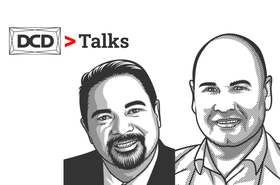Data centers have helped buttress nearly all facets of our increasingly digital world, and in the coming years they are expected to be an essential piece in electric grid support and energy management.
The power generation industry is in the midst of major changes as energy demands increase, while simultaneously more emphasis is now placed on renewables, distributed generation and decarbonization initiatives.
The irregular nature of renewable energy sources used in the grid poses significant challenges, particularly to the stability and availability from frequency variations caused by momentary imbalances.
As stakeholders look for solutions during this shifting energy landscape, many believe data centers are uniquely positioned to offer grid balancing services through the use of grid interactive uninterruptible power supplies (UPS) and other energy storage systems.
In most data center applications, backup batteries in a UPS only come into play should an outage occur; thus, these batteries spend much of their lifetime unused. Smart UPS technology uses the batteries’ storage systems to accumulate energy and instantly release it whenever needed.
According to a recent survey by analyst and consultancy firm OMDIA, about 90 percent of data center operators are likely to deploy UPS systems to interact with the grid and support essential energy management initiatives within the next four years.
By providing services through dynamically supporting the grid such as frequency response, data center operators can reap a number of benefits, including new revenue streams, cost-saving opportunities, improved operational resilience and reduced grid supply constraints ‒ without taking away from the UPS unit’s mission of protecting the IT load.
Unlocking the potential of a grid interactive UPS
A grid interactive UPS with a properly sized energy storage system is designed to provide a fast enough response to meet the needs for frequency containment and support income-generating services.
This stems from the UPS’ primary function, which is to protect the critical load and guarantee availability under any conditions.
A UPS is optimized to have improved battery life by controlling the main aging factors, and it is optimized for flexibility by having the ability to stop or pause the grid services functionality under specific conditions, requiring a manual or automatic acknowledgment respectively to restart it.
The fundamentals of using a grid interactive UPS
A grid interactive UPS must be capable of adjusting its power demand to provide ancillary services while keeping the critical load backed up with sufficient remaining battery runtime, to allow for normal transfer to generators in the event of a utility failure.
When a grid frequency variation is detected by the external controller, the UPS is commanded to follow this request for positive and negative regulation by charging or discharging the batteries within their operational limits.
The UPS controls the input power to achieve certain targets or services by working in a variety of different modes. These modes include:
- Standard UPS operation (normal operation): With 100 percent input power from main utility grid through the rectifier, the UPS behaves as a standard double conversion UPS.
- Discharge mode (full disconnection): With full disconnection from the grid, 100 percent of the power to the load is coming from the battery after the command has been received from the external controller.
- Discharge mode (partial disconnection): The input power from the grid is adjusted and reduced following the external controller command. The remaining power for the load is coming from the batteries (25 percent in this case).
- Recharge mode: When battery state of charge is below 100 percent, the utility starts to charge the batteries following an over frequency detection. Available maximum recharge power is 20-25 percent of maximum UPS capacity (limited by the battery recharge capacity and max input current).
- Export/mode: The UPS control is also able to manage energy export into the grid. When required, the grid interactive UPS will work as a bi-directional power converter, by discharging the batteries to inject power upstream to the UPS.
Revenue and balancing benefits for end users
Using a grid interactive UPS allows businesses and private energy users to commercialize the energy they store and lower overall energy costs. One way this is done is through balancing services, which help demand meet grid supply. These services are done through targeting fast frequency response and demand management.
In fast frequency response service programs, the UPS battery storage systems are used to amass energy and release it instantaneously according to the following examples:
- Dynamic Frequency Response: A continuous service used to balance the system in real time with an amount of power in proportion to the frequency deviation, which is constantly adjusted by the second. This service results in continuous positive and negative power variations to control the frequency within the operational limits, remaining as close as possible to 50Hz.
- Static Response: Conversely, with static response, the response is triggered when the frequency operational limits (specifically over or under frequency values) are exceeded and adjusted with a fixed amount of power.
Demand management, known also in the industry as “peak shaving,” is an alternative approach toward balancing utility supply and demand by reducing electricity demand in times of power scarcity or high energy costs.
There are two common programs used for demand management. The first is a priced-based program where consumers adjust their energy consumption according to the changes in electricity market price.
The second is an incentive-based program where earnings are provided through contracts where consumers are paid to shift or reduce their energy consumption.
In exchange for contributing to these programs, companies receive a regular financial payment based on the size of the contract for such services, known as a “capacity payment,” and in some cases, may also receive a bonus bundle for being enrolled.
When providing grid balancing services, participants receive additional “energy” payments based on how quickly they react to grid frequency variations, as well as on the amount of energy reduced. As a rule of thumb, the faster the response time, the higher the revenue potential.
Payment amounts vary depending on the program rates offered by the grid operator or energy service provider, which will ensure the end user receives the maximum financial benefits for participating in that specific program.
As with any new technology, there will be plenty of challenges to consider as we see grid balancing practices become more mainstream. However, a trusted critical infrastructure equipment provider can work with you to overcome them. And as efforts to stabilize the grid while moving away from traditional sources of energy become more aggressive, few will be able to ignore the benefits provided by using a grid interactive UPS.
Click here to listen to a webcast where experts discuss the data center and the grid in more detail and for further information, check out the Vertiv white paper, “How to maximize revenues from your data center energy storage system with grid interactive UPS.”
More from Vertiv
-

Sponsored How commissioning can help overcome today’s challenges in healthcare IT expansion
Vertiv's Chris Dansa explores the key benefits of taking a commissioning approach to healthcare IT construction
-

Sponsored A chilled approach to sustainability
How chilled water cooling can play a part in unlocking sustainable data center growth
-

Sponsored Breathing new life into your data center
How to retrofit using disruptive technologies


